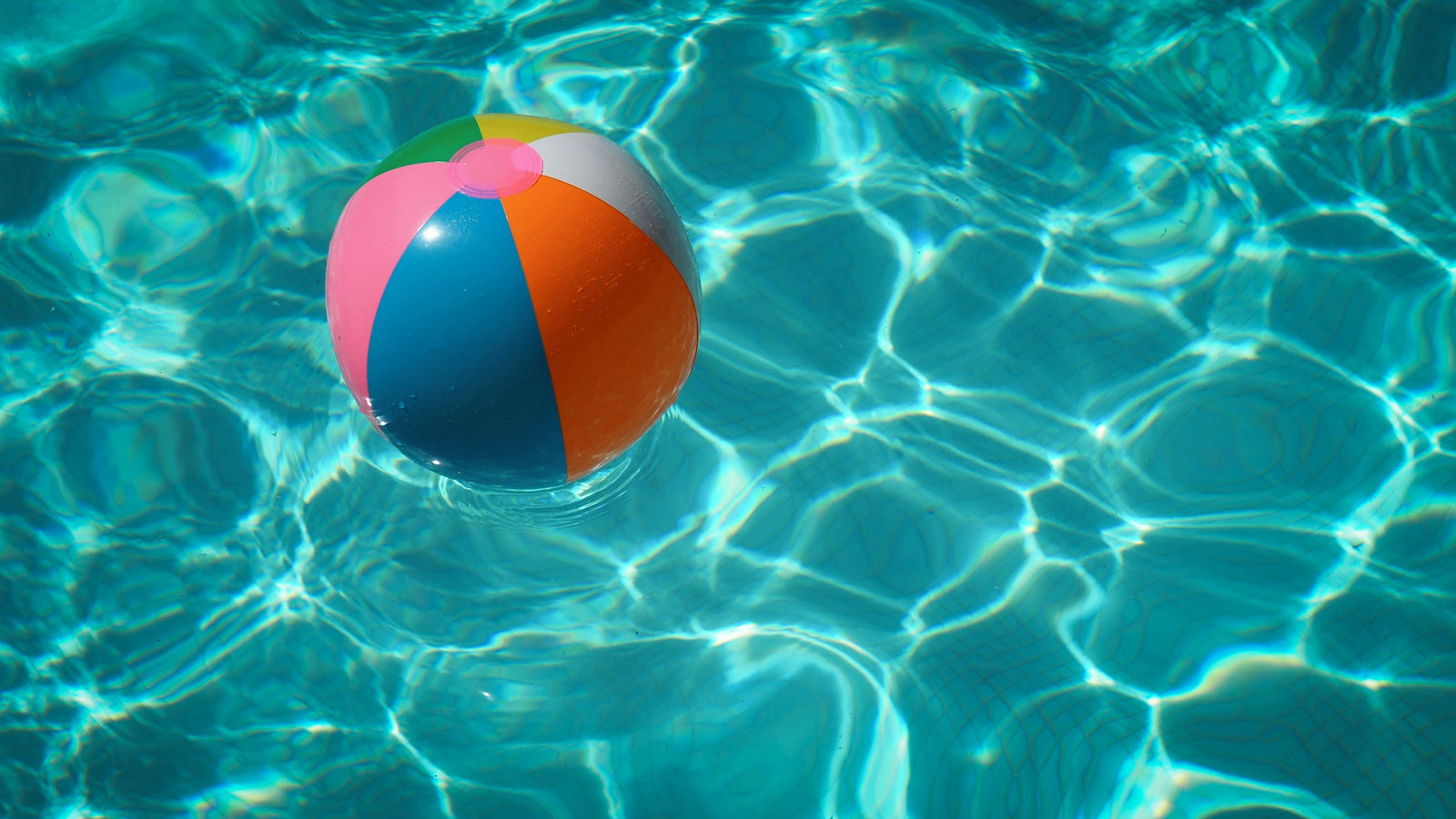How to Minimize Chlorine Exposure At The Pool

Swimming is one of the great pleasures of summer, especially if you live in a hot and humid climate.
However, the chlorine used to treat most public and private swimming pools is a harmful chemical.
This leaves us in a bit of a quandary: do you risk it for the sake of good exercise and summertime fun? Or go the very unpopular route and avoid chlorinated pools altogether?
If you and your family enjoy swimming and socializing, chances are you’ll risk it and swim in a chlorinated pool at least a few times this summer. Which makes learning how to protect yourself from the effects of chlorine a must for healthy summertime fun.
The Health Impacts of Chlorinated Pools
There are several reasons we recommend taking steps to limit your chlorine exposure as much as possible.
The biggest reason is that chlorine is especially dangerous if absorbed in large amounts.
Now, if you frequent a pool where the staff is very conscious of the chlorine levels this may not pose a huge threat.
However, not every pool’s staff is perfect at monitoring chlorine levels, and this can lead to a variety of short-term and long-term health consequences.
Avoiding swallowing pool water is essential, however, it also gets in through our skin.
Research has shown our skin can absorb various chemicals at a rate of up to 64% or more depending on the chemical, condition of the skin, and location of exposure.[1][2][3][4]
This is why some medications can be given by gel or patch, it gets in via the skin, just like chlorine.
Unfortunately, chlorine competes with iodine in the body and displaces iodine uptake in the thyroid gland which can lead to thyroid issues such as hypothyroidism.[5][6]
It's also an endocrine-disruptor, meaning it can negatively impact hormonal function of the thyroid and other glands.
Chlorine is also a lung irritant due to the toxic gases it emits, such as nitrogen trichloride[6]
Although chlorine does disinfect water, it also creates other harmful compounds called disinfection by-products (DBPs).
Research has shown that DBPs are carcinogenic and negatively impact a variety of organs and systems, most notably your skin, eyes, and liver.[8][9]
We don't share these facts to rain on your summer fun, but to increase awareness about why it’s so important to protect yourself from frequent chlorine exposure.
6 Ways to Minimize Chlorine Absorption
Since not many people will want to don a full-body wet suit, here are some simple steps to reduce your exposure to chlorine and other harmful disinfectant byproducts (DBPs).
- Shower before entering the pool.
- This prevents chlorine from reacting with organic matter in your skin and hair, which studies have shown can create potentially cancerous by-products.
- Swim in outdoor pools to minimize lung irritation from trapped gases in enclosed area.
- Talk to the pool staff to ensure they’re trained on how to administer and monitor chlorine levels. This is especially important if you visit one pool frequently, like your community pool or gym.
- Hydrate well before and during your swim. This will help your body absorb less pool water.
- Wear goggles to protect your eyes, another avenue for chlorine absorption
- Shower in warm (not hot) water immediately after leaving the pool using natural soap, like Branch Basics Foaming Wash. This will remove as much chlorine from your skin as possible, while the warm water prevents your pores from opening up and exposing you to more chlorine.
These steps are so simple, but they can make a significant difference in your chlorine exposure.
Additional Tips For Minimizing Chlorine Exposure Through Diet
You can also minimize chlorine exposure through up-regulating your diet and focusing on foods and practices that support detoxification and reduce the body's chlorine load.
Get Plenty of Vitamin C
Vitamin C is a natural chlorine neutralizer used to create safer drinking water and reduce chlorine in water world-wide.[12]
It's also the most important water soluble antioxidant vitamin in the body, so ingesting it before and after swimming can increase antioxidant levels, which helps reduce oxidative stress from chlorine while strengthening the cells.
Foods like fruits and vegetables are a great way to increase Vitamin C levels.
Enjoying a big piece of watermelon before or after swimming provides a refreshing treat that boosts Vitamin C to combat chlorine.
Also, taking a natural Vitamin C powder or capsules before and after swimming is a great way to combat the damaging impact of exposure to chlorine.
Increase Iodine Intake
Adequate iodine levels protect the thyroid from damage and may help off-set issues with chlorine interference.[13]
Excellent sources of iodine include sea vegetables, wild-caught seafood (especially cod and oysters), eggs, liver, Greek yogurt, pineapple, strawberries, and prunes.
You can also take an iodine supplement, but it's important not to take too much so check with your healthcare practitioner for individual recommendations.
Note: Iodine deficiency is a common cause of thyroid issues.
However, there is a caveat, not everyone with a thyroid issue benefits from more iodine.[10]
Consult with your doctor about taking iodine if you are on thyroid medication, or have an autoimmune condition called Hashimotos that impacts the thyroid.
Increase Antioxidant-Rich Foods
Consuming foods high in antioxidants can help neutralize free radicals, support the body's natural detoxification processes, and may help lessen the negative effects of chlorine.[14][15]
Eat the rainbow! Include fruits like berries, oranges, apples, and grapes, and colorful vegetables like leafy greens, broccoli, carrots, red cabbage, and bell peppers.
Boost Glutathione Levels
Glutathione is a powerful antioxidant that plays a crucial role in detoxification.
Eat sulfur-rich foods such as garlic, onions, and cruciferous vegetables (broccoli, cauliflower, Brussels sprouts)and include protein sources like beans and legumes, lean meats, fish, and eggs.
Food is medicine! So enjoy these healing foods as part of your summer recipes.
Our Favorite Chlorine Pool Alternatives
Chlorine is necessary for keeping most types of pools clean and sanitary, but there are alternatives, including
- Salt water pools: Most cities and towns have at least one athletic club or hotel with a salt water pool. And while some may add a bit of chlorine, it will be a lot less than a traditional chlorinated pool.
- Natural bodies of water: It goes without saying (but we will) that clean lakes, rivers, ponds, creeks, oceans, waterfalls, etc. are an ideal way to cool off, naturally.
- Pools treated with chlorine alternatives: Yes, these do exist! Examples include: Wailani, a swimming pool ionizer and sanitizer; and Spectralight’s system which uses UV light and hydrogen peroxide to disinfect.
Final Thoughts On Reducing Chlorine Exposure This Summer
Like with all things health-related, when it comes to swimming, it's important to strike a balance that aligns with your health needs and goals.
While in a perfect world all pools would be chlorine-free, swimming is also excellent exercise and getting out in the sun does wonders for your vitamin D levels and your emotional health.
So, stay aware, follow these tips, and enjoy your summer!
Looking For More Ways To Enjoy A Low-Tox Summer?
Check out the following articles:
- Our Favorite Non-Toxic Sunscreens to Protect Your Skin This Summer
- How To Remove Sweat & Armpit Stains [Complete Guide]
- Sunning: How to Take Advantage Of The Summer Sun by Outgassing (AKA Offgassing)
Note: The information in this article is provided for educational purposes only and is not intended to diagnose, treat, cure, or prevent any disease.
References:
1: https://pubmed.ncbi.nlm.nih.gov/6711723/
2: https://www.cdc.gov/niosh/skin-exposure/about/index.html
3: https://www.sciencedaily.com/releases/2024/06/240624125549.htm
4: https://www.nature.com/articles/s41597-024-03588-3
5: https://pmc.ncbi.nlm.nih.gov/articles/PMC1567021/?page=1
6: https://pmc.ncbi.nlm.nih.gov/articles/PMC9326600/
7: https://www.epa.gov/sites/production/files/2016-09/documents/chlorine.pdf
8: https://academic.oup.com/aje/article/165/2/148/98015
9: https://www.ncbi.nlm.nih.gov/pmc/articles/PMC4351252/
11: https://pubmed.ncbi.nlm.nih.gov/18052717/
12: https://www.fs.usda.gov/t-d/pubs/html/05231301/05231301.html
13: https://www.nature.com/articles/s41574-024-00983-z
Categories

Allison Evans
Allison has dedicated herself to helping others reap the benefits of clean living. She, along with her husband and two daughters left Houston for the country life as she heals from a recent mold exposure and diagnosis of chronic Lyme disease. Follow her story on our Instagram and read more about her Journey to Fertility.







